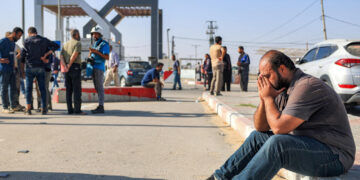Except for a recent disturbance caused by external troublemakers, locations like Malerkotla in Punjab and Nuh in Haryana stand as examples of peace and harmony. Comparable pockets of Hindu minorities are also present in the Sindh province of Pakistan and various regions in Bangladesh. However, the scenario in Manipur differs significantly.

The current situation in Manipur not only raises humanitarian concerns but also poses a significant challenge in terms of governance and security. The chief minister’s assertion of 90% control over the violence is not only startling but also seems disconnected from the grim reality on the ground.
The profound ethnic rift between the Kuki and Meitei communities in Manipur has reached a critical juncture. The ongoing violence has led to a stark demographic shift, resulting in a notable absence of Kuks in regions predominantly inhabited by Meiteis, and vice versa. This segregation has become so pronounced that Meiteis are scarcely found in Kuki-dominated hill areas, while Kikis are virtually non-existent in the Valley predominantly inhabited by Meiteis.
The severity of the situation has compelled the authorities to take drastic measures. To mitigate further conflict and maintain a semblance of peace, buffer zones have been established, effectively segregating the Kuki and Meitei communities. Additionally, security forces have been deployed along these demarcated zones to regulate movement, resembling the measures often seen along international borders.
This separation, enforced for the sake of preventing clashes and preserving stability, symbolizes the deep divisions and heightened tensions between these communities. The need for such buffer zones underscores the urgency to address the underlying issues fuelling this divide and to seek long-term solutions that promote harmony and coexistence between the Kuki and Meitei people in Manipur.
Thousands of automatic weapons, including rocket launchers, along with a substantial quantity of ammunition, have been illicitly looted from police and India Reserve Battalion (IRB) armories. These pilfered arms are now being wielded with impunity by perpetrators of violence, indiscriminately targeting civilians. Despite fervent appeals from the state government for the return of these arms, there has been a disappointing lack of compliance, leading to a grave situation.
The aftermath of this armory looting has been catastrophic, resulting in a loss of over 200 lives and the displacement of more than 75,000 individuals. The failure of both the Union and state governments, both under the BJP rule, to take decisive action in response to this crisis has bewildered and incensed the public. Their inaction has drawn widespread condemnation and exacerbated public outrage towards both administrations.
Expressing this sentiment unequivocally, the state’s BJP unit articulated in a letter addressed to the central government, “…public discontent and protests are gaining momentum, attributing the prolonged unrest squarely to the government’s inability to address the situation.” Furthermore, the Chief Minister, who hails from the Meitei community, appears to be losing support even within his own constituency. Instances such as the targeted attacks on the Chief Minister’s residence and that of the state BJP chief by members of the Meitei community highlight the growing dissatisfaction and unrest among the populace.
The lack of trust in Manipur’s state institutions marks a distressing trend, where a significant portion of the populace has lost faith in the state police. Consequently, they feel compelled to establish and rely on Village Defence Committees to ensure their safety, especially from threats posed by other communities. The recent events have underscored the glaring inadequacies of the Manipur Police, evident in their inability to prevent mobs from looting their armories. This failure has severely eroded public trust in the police force’s ability to guarantee security.
The broader spectrum of governance, including the bureaucracy and the state government, has also demonstrated profound incompetence, further diminishing public confidence in state institutions. The faltering authority of the state government is evident, as its influence appears to wane within Manipur. The escalating situation is indicative of a state teetering on the brink of a civil conflict, which, if left unchecked, could imperil the peace and stability not only in Manipur but also across the larger Northeast region.
Despite the gravity of the situation and its implications for the Northeast’s future, the Union government’s response remains lackluster and directionless. The decision to retain Chief Minister Biren Singh amidst the ongoing violence, citing his cooperation, seems perplexing. The Union Home Minister’s rationale for not invoking President’s rule solely based on cooperation raises bewilderment, as the law and order breakdown in Manipur has become undeniable, warranting decisive steps to restore normalcy.
The lack of trust in both the Manipur Police and Assam Rifles, deployed to quell the violence, by conflicting parties further emphasizes the necessity of imposing President’s rule. Certain decisions, such as selectively extending AFSPA and altering agreements with insurgent groups, seemingly favor one community over the other, raising concerns about impartial leadership.
Remarkably, Meitei insurgent groups remain armed, with a significant portion of looted arms finding their way into their possession, amplifying the complexities of the conflict. This situation demands urgent and impartial intervention to prevent further escalation and to restore order in Manipur.










_after_crash_landing-360x180.jpg)
































